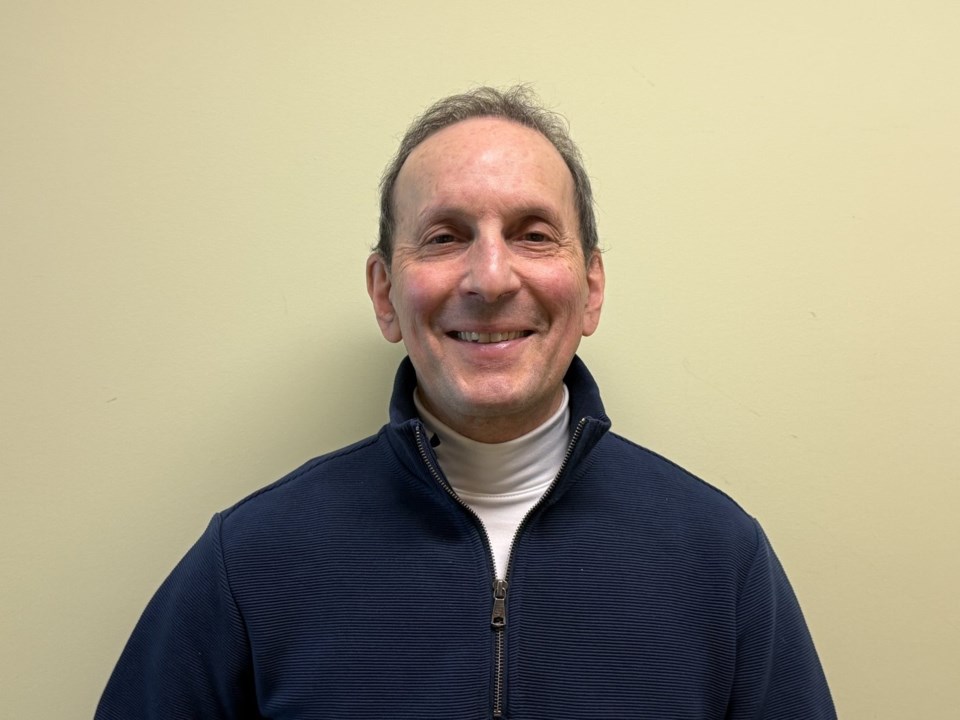GRAND FORKS — For the last couple of years, Gloria Gebur had been waiting for an organ transplant donor, as her health deteriorated and she battled a disease that causes chronic liver failure. She finally found one — an unexpected one. ADVERTISEMENT Last fall, her niece, Michaela Hill, 35, secretly sought testing as a possible donor at Mayo Clinic in Rochester, Minnesota.
She learned she qualified as a match for the woman who “was always a second mother to me,” she said, and “taught me so much about how to live my life.” When Hill called to tell her she was a match, Gebur recalled, “she said something like, ‘Auntie, Auntie, I’m going to give you part of my liver; it’s all set up. .

.. ’ “I burst into tears,” said Gebur.
“Pretty exciting for me. And a big commitment on her part.” About her niece becoming her donor, Gebur said, “It’s pretty special.
I was not expecting it at all. ..
. We were just really thrilled that she was willing to give of herself like this ..
. ” Hill is the daughter of Steven and Deb Hill of Grand Forks; Deb and Gloria are sisters. Gloria and Jim Gebur moved here in 2023 after more than 40 years in Drayton, North Dakota.
She served as administrative director of health services at the Life Skills Transition Center in Grafton, for 41 years, and he was a math teacher for 45 years with Drayton Public Schools. ADVERTISEMENT The disease Gloria Gebur, 70, suffered from chronic liver failure due to nonalcoholic fatty liver disease, or NAFLD. She estimates that she had the disease for “probably 15 years,” she said.
“Liver disease just kind of progresses — it just gets worse and worse. It takes time.” Fatigue and other symptoms progressed; she had “a lot of episodes” with bleeding in her esophagus, she said, “and it was very scary.
” Symptoms became severe in August 2022. Gebur underwent a procedure locally that “stabilized things for me temporarily, so, for about a year, I was feeling much better than I had been previously,” she said, “and I was in pretty good shape when I actually had the transplant, which was a big blessing.” But a liver transplant was her only hope for long-term survival.
Seeking medical care at Mayo Clinic, Gebur was placed on the transplant list about two years ago, she said, and doctors there worked with her for more than a year as she prepared for the surgery. Waiting, hoping About 9,500 people are on a waiting list for a liver transplant, according to OrganDonor.gov.
About 20% either die or become too sick while waiting. ADVERTISEMENT Donors must be between the ages of 18 and 60, be in excellent health and have a compatible blood type. According to a Mayo Clinic patient-education booklet, the donated part of the liver grows in the recipient until it reaches the size the recipient needs.
The donor’s liver usually grows back to full size within a few months. “It’s really interesting how livers are — they regrow quickly,” Gebur said. “It’s a big miracle.
” Because of Gebur’s condition, a liver transplant “was the most sustainable treatment option for her,” Hill said. “The number of people waiting for a liver transplant greatly exceeds the number of available deceased-donor livers.” Although a deceased-donor transplant is also an option, Gebur did not place high enough on the triage list for that kind of transplant, so a living-donor transplant was her best option, Hill said.
Mayo Clinic has one of the largest living-donor and liver transplant programs in the country. Its surgeons perform more than 500 liver transplants each year, including many from living liver donors. ADVERTISEMENT Gebur receives continuing care locally, including weekly blood draws with results sent to Mayo and medications that are supervised by Mayo physicians.
She’ll undergo periodic check-ups at Mayo Clinic. Because her immune system is weakened, she takes meds that prevent rejection of the new liver, wears a mask in public and avoids crowds and people who are ill. Michaela’s choice About a year ago, Hill became aware of her aunt’s need for a transplant, she said, and in the summer she and her cousins talked about being tested as potential donors.
A liver transplant was “a last, sort of end treatment,” said Hill, who lives with her husband and their children, ages 4 and 2, in Spain. The donation process “takes a lot of time — six weeks minimum,” she said. “You have to be able to take time off from work,” in addition to making other lifestyle accommodations.
More than 60% of people who undergo testing to determine eligibility as donors do not match for lots of reasons, she said, among them, anatomical incompatibility — physical features of the liver are not a fit for the recipient — and certain serious health conditions. Hill wanted to explore the possibility because of what Gebur meant to her as a positive role model. “Throughout her life, my aunt has always been an incredible example of love and sacrifice for her family,” Hill said.
“Her love language is definitely ‘acts of service to others’ — constantly taking care of those around her through her career as a nurse, loving mother, aunt and wife. ADVERTISEMENT She taught me a lot about how to live a life full of love and dedication to family.” Psychological, physical testing “When the time came for someone to step up to help her, I was immediately intrigued at the possibility,” she said.
But becoming a donor is far from a simple process, she found out. “It’s actually quite difficult to be approved,” she said. In determining her eligibility, Hill first completed an in-person evaluation and two rounds of phone interviews with a nurse and a donor advocate in September.
“At that time, I didn’t know if I would be a match or not, so I hadn’t made a final decision yet,” she said. “I wanted to know if I would even be a match before I went through the process of deciding it was something that I would be willing and able to do.” Unbeknownst to her aunt, she began to explore the possibility of becoming a donor with members of Mayo’s transplant team.
She did not tell her aunt, she said, because “I didn’t want to get her hopes up. It can be disappointing if she knew and then I wasn’t a match.” The testing involved an online evaluation, in-person interviews and, after that, in-person extensive psychological and physical examinations — a process that lasted more than four days.
She met with nurses, doctors, social workers, donor advocates and surgeons. ADVERTISEMENT She underwent numerous tests, including anatomical scans, blood work, MRI (magnetic resonance imaging), CT (computed tomography) scans and echocardiogram, and was informed about the possible complications and percentages of catastrophic outcomes. ‘Incredible opportunity’ The decision to become a donor was not a simple one, said Hill, who is not only a wife and mother of very young children but also holds down a full-time job.
“As a young, relatively healthy, active donor, my chances of devastating complications were low, however nevertheless possible, as with any major open-abdominal surgery,” Hill said. She is grateful to her parents — both medical professionals — who put those risks “into perspective to help me make an informed decision.” When Hill learned she was a match, she worried that Mayo might not have an available date for the surgery in December, the month that would work best for her work schedule.
Setting the date required the availability of five doctors – two for the recipient, two for the donor and one “floating” doctor. When Hill finally received the email, “‘We have a December date for you!,’ I was overjoyed and simultaneously very nervous. Then it became very real,” she said.
It was time to make the final decision and tell her aunt. Making the decision to donate a portion of her liver was “tough,” requiring thoughtful consideration, especially as a mom of young children, she said. “I had to trust my faith and intuition that this was something I was meant to do.
“Once I fully accepted the chance to live out this incredible opportunity to give a gift of life to my aunt, and with the unending support of my family, it became an easy ‘yes’.” From her home in Spain, she connected with her aunt via FaceTime in October and told her the good news. “I think she was shocked.
She had not given up hope, but she was not expecting it,” Hill said. “She was excited and thrilled. I could see the relief of finding a match.
...
It was fun because I was able to tell her not only that I was a match, but also that we had an approved surgery date in about two months.” The surgery was scheduled for Dec. 17.
“It was quite a Christmas present,” Gebur told the Herald in a recent interview. The surgery During the surgery, doctors removed almost 70% of Hill’s liver, which — after Gebur’s defective liver was removed — was immediately placed in her aunt’s body where the bile ducts and blood vessels were reconnected. The surgery took about four hours, Hill said.
Both came through it “very well” and without any significant complications, said Dr. Steven Hill of Grand Forks, Michaela Hill’s father. He and his wife “are so proud of Michaela for this selfless and wonderful gift to Gloria .
..” After the transplant surgery, Hill’s recovery went “really smoothly,” she recalled.
She was up and walking the day of the surgery and, after six days in the hospital, she was discharged. She and Gebur spent time recovering in the Gift of Life Transplant House in Rochester. Hill returned to Grand Forks after about two weeks and, in early January, flew home to Spain.
Gebur, who returned to Grand Forks on Jan. 10, describes the Gift of Life house as “a really beautiful place,” where people who’ve undergone various transplants — lung, hearts, kidney, liver and STEM cell — support each other. For Hill, “by about six weeks, almost all incisional pain was gone and I started feeling almost back to normal,” she said.
Her restrictions included not lifting anything over 10 pounds and not drinking alcohol for six months. The only medication she needed was for pain management, she said, and for about three months, aspirin to prevent blood clots. ‘Grateful’ to give Looking back, Hill said, “I’m grateful that I was able to make the journey of my aunt’s liver treatment a little easier and I hope that my actions may inspire others to do the same for someone in their life.
It certainly doesn’t need to be a major surgery, but even a small act of intentional kindness can go a long way.” About the liver donation, Hill said, “I knew she needed it, and I could do it. .
.. I’m thankful for the experience and what it’s taught me.
” These days, Gebur feels “real good,” she said. “I’m up and around, and walking and doing pretty much everything I did before.” She has relied on her Christian faith to carry her through the trying times.
The liver transplant “is definitely a real blessing for me — it’s a gift from God,” Gebur said. “I do have a strong faith, and I really do feel like, you know, God has been watching out for me all the while I’ve been going through this.” In the Bible, “Philippians 4:6-7 is a verse I really do believe in,” she said.
“It says, ‘Don’t worry about anything. Instead, pray about everything. Tell God what you need and thank Him for all He has done.
If you do this, you will experience God’s peace, which is far more wonderful than the human mind can understand. His peace will guard your hearts and minds as you live in Christ Jesus.’ .
.. “It’s a real special verse for me, because God really did give me peace during these two years.
”.
Health

Grand Forks woman receives ‘gift of life’ in liver transplant

Gloria Gebur’s niece Michaela Hill embraces the “incredible opportunity” to become a donor, she said. “I had to trust my faith and intuition that this was something I was meant to do.”














